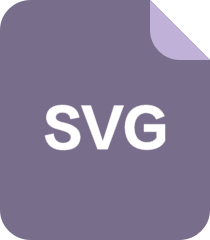PyPI 官网下载 | svgbatch-0.1.9.tar.gz
2.虚拟产品一经售出概不退款(资源遇到问题,请及时私信上传者)
《PyPI官网下载 | svgbatch-0.1.9.tar.gz——深入了解Python库的发布与使用》 在Python的世界里,PyPI(Python Package Index)是最重要的资源库,它为全球开发者提供了一个集中分享和下载Python软件包的平台。本文将深入探讨PyPI及其在下载svgbatch-0.1.9.tar.gz这一特定资源时所涉及的知识点,包括Python库的发布、下载流程以及如何使用这个特定的库。 让我们了解一下PyPI。PyPI是Python的官方软件包仓库,也被称为Cheeseshop。它存储了大量的Python模块和程序,开发者可以在这里发布自己的开源项目,而其他用户则可以通过pip(Python的包管理器)方便地安装和更新这些项目。PyPI的网址是https://pypi.org/,在这里,你可以找到各种功能各异的Python库,包括svgbatch。 svgbatch-0.1.9.tar.gz是一个典型的Python库压缩包,其文件扩展名tar.gz表示这是一个使用gzip压缩的tar归档文件。在Python开发中,这种格式通常用于发布源代码包,因为它包含了所有必要的文件,如源代码、文档、元数据等。解压这个文件后,我们可以看到其内部结构,包括setup.py(用于安装库的脚本)、README文件(通常包含库的简要介绍和使用指南)、源代码文件等。 接下来,我们来谈谈Python库的下载和安装。在命令行中,使用pip工具可以直接从PyPI下载并安装库。然而,对于svgbatch-0.1.9.tar.gz这样的源码包,我们需要先手动下载,然后通过命令行进行解压、编译和安装。具体步骤如下: 1. 下载:访问PyPI官网或使用wget/curl等工具下载svgbatch-0.1.9.tar.gz。 2. 解压:使用tar -zxvf svgbatch-0.1.9.tar.gz命令解压。 3. 进入目录:cd svgbatch-0.1.9进入解压后的目录。 4. 安装:执行python setup.py install命令,这将编译源代码(如果需要)并在本地Python环境中安装库。 对于svgbatch库本身,根据其名称推测,它可能是一个处理SVG(Scalable Vector Graphics)批处理的工具。SVG是一种基于XML的矢量图形格式,广泛应用于网页设计和图形编程。svgbatch可能提供了批量操作SVG文件的功能,比如转换、合并或者修改SVG图形属性等。然而,具体的库功能需要查看其README文件或在线文档来了解详情。 总结来说,PyPI作为Python开发者的宝贵资源库,使得分享和使用Python库变得极其便捷。svgbatch-0.1.9.tar.gz就是一个实例,它展示了Python库的发布形式和下载安装流程。对于开发者而言,掌握这些知识不仅可以提升工作效率,也有助于更好地利用开源社区的力量,提升自身的编程技能。
 svgbatch-0.1.9.tar.gz (25个子文件)
svgbatch-0.1.9.tar.gz (25个子文件)  svgbatch-0.1.9
svgbatch-0.1.9  PKG-INFO 6KB
PKG-INFO 6KB README.txt 4KB
README.txt 4KB docs
docs  README.rst 5KB
README.rst 5KB README.html 10KB
README.html 10KB svgbatch
svgbatch  testdata
testdata  03-green-star.svg 3KB
03-green-star.svg 3KB 06-cyan-star-with-hole.svg 3KB
06-cyan-star-with-hole.svg 3KB 05-orange-ghost-l-l.svg 5KB
05-orange-ghost-l-l.svg 5KB 07-human.svg 3KB
07-human.svg 3KB 01-one-red-triangle.svg 2KB
01-one-red-triangle.svg 2KB 04-pacman4.svg 4KB
04-pacman4.svg 4KB 02-three-orange-triangles.svg 3KB
02-three-orange-triangles.svg 3KB mock
mock  mock.py 7KB
mock.py 7KB testcase.py 2KB
testcase.py 2KB __init__.py 90B
__init__.py 90B testutils.py 994B
testutils.py 994B bounds.py 2KB
bounds.py 2KB path.py 8KB
path.py 8KB demo.py 3KB
demo.py 3KB tests
tests  pathtest.py 9KB
pathtest.py 9KB __init__.py 121B
__init__.py 121B __init__.py 27B
__init__.py 27B tesselate.py 5KB
tesselate.py 5KB svgbatch.py 2KB
svgbatch.py 2KB setup.py 684B
setup.py 684B LICENSE.txt 2KB
LICENSE.txt 2KB- 1

- 粉丝: 14w+
- 资源: 15万+
 我的内容管理
展开
我的内容管理
展开
 我的资源
快来上传第一个资源
我的资源
快来上传第一个资源
 我的收益 登录查看自己的收益
我的收益 登录查看自己的收益 我的积分
登录查看自己的积分
我的积分
登录查看自己的积分
 我的C币
登录后查看C币余额
我的C币
登录后查看C币余额
 我的收藏
我的收藏  我的下载
我的下载  下载帮助
下载帮助

 前往需求广场,查看用户热搜
前往需求广场,查看用户热搜最新资源
- x64dbg-development-2022-09-07-14-52.zip
- 多彩吉安红色旅游网站-JAVA-基于springBoot多彩吉安红色旅游网站的设计与实现
- 本 repo 包含使用新 cv2 接口的 OpenCV-Python 库教程.zip
- 更新框架 (TUF) 的 Python 参考实现.zip
- Qos,GCC,pacing,Nack
- 章节1:Python入门视频
- 无需样板的 Python 类.zip
- ESP32 : 32-bit MCU & 2.4 GHz Wi-Fi & BT/BLE SoCs
- 博物馆文博资源库-JAVA-基于springBoot博物馆文博资源库系统设计与实现
- 旅游网站-JAVA-springboot+vue的桂林旅游网站系统设计与实现


 信息提交成功
信息提交成功